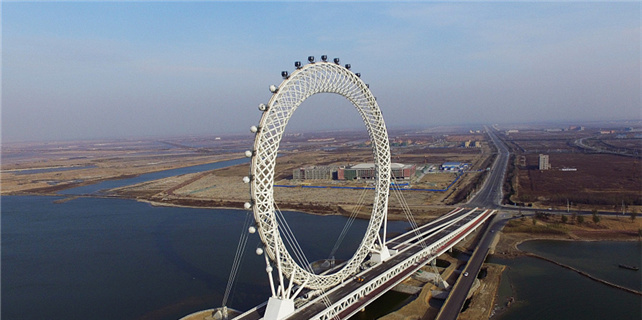Faster expansion in factory activity shows economic resilience
BEIJING — China's manufacturing sector expanded at a faster pace in November despite production curbs aimed at air pollution control in some factories, official data showed Thursday.
The country's manufacturing purchasing managers' index (PMI) came in at 51.8, up from 51.6 in October, according to the National Bureau of Statistics (NBS).
A reading above 50 indicates expansion, while below reflects contraction.
The data beat market expectations, and pointed to continued resilience in China's growth headed into year-end, said Tom Orlik, Bloomberg chief Asia economist.
"The economy remains in a sweet spot - with policy makers facing little trade-off between the conflicting objectives of growth and deleveraging," Orlik said in a research note.
Sub-indices for production and new orders came in at 54.3 and 53.6, respectively, up from 53.4 and 52.9 last month, indicating accelerated growth in both supply and demand, according to NBS senior statistician Zhao Qinghe.
The growth in production came despite stricter enforcement of environmental rules during winter.
As winter heating in the country's northern region added pressure to air quality, government authorities have resorted to temporary shutdowns of factories or production restrictions in emission-generating industries to reduce pollution.
The market-beating manufacturing PMI data showed that tighter environmental rules would have limited impact on supply and demand as China restructures its economy and develops new growth drivers, according to Zhang Yiping, an analyst with China Merchants Securities.
Companies were more willing to buy, as the sub-index for purchase volume surged to 53.5, the second highest reading this year.
Such a rise indicates improved confidence in the future for many enterprises, according to Zhang.
Equipment manufacturing and high-tech manufacturing continued robust growth, with the sub-indices coming in at 52.9 and 53.2 respectively, suggesting improved industrial structure.
External demand bounced back, with the sub-index for new export orders edging up to 50.8 from 50.1 in October.
China's manufacturing PMI has been in positive territory for 16 consecutive months.
The NBS data also showed that China's non-manufacturing sector expanded faster in November, with non-manufacturing PMI coming in at 54.8 in November, up from 54.3 in October.
The service sector was stable with the help of the November 11 shopping festival, which boosted several industries, including retail and logistics.
Strong construction activity also contributed to the rise in non-manufacturing PMI, with the sub-index jumping to 61.4 from 58.5 in October.
"A rise in both the price and quantity indicators of industrial products in the spot market in November indicated robust investment demand in south and east China in the construction peak season heading to the Spring Festival," according to investment firm China International Capital Corporation (CICC).
"We expect the trend of industrial profit recovery and balance sheet improvement to continue in the near term," CICC said.
Earlier data from the NBS showed that China's major industrial firms saw stronger profit growth in the first 10 months of the year.
Industrial companies with annual revenue of more than 20 million yuan (about $3 million) reported profits of 6.245 trillion yuan in the first 10 months, up 23.3 percent year-on-year.
















